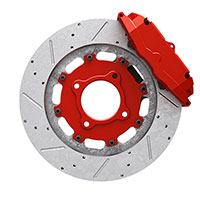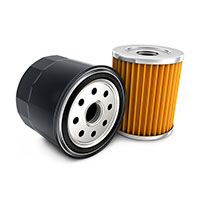Non-Custodial vs Custodial Wallets: What’s the Difference?
Content
- Remember, Crypto Investments Are Risky
- Potential risks and considerations when using custodial wallets
- What Is a Crypto Custodial Wallet?
- Thousands of supported coins and tokens
- Addressing Scalability and User Experience
- With Ledger Live, it’s possible to manage and stake your digital assets, all from one place
- Custodial vs. Non-Custodial Wallets: What’s the Difference?
In addition, the private key functions like a password for securing funds and signing transactions. Although some software wallets will offer password protection for users to gain access to an app, the private key (or seed phrase) enables users to restore a wallet from another device. Safety issues aside, users storing their assets in custodial wallets are unable to interact with decentralized applications and the custodial wallet innovative use cases they provide, which we will touch upon later in this piece. Despite the advantage custodial wallets offer in terms of usability and simplicity, some investors prefer to take extra caution when giving up custody of their assets.
Remember, Crypto Investments Are Risky
Non-custodial wallets are a foundational component of the Web3 ecosystem, embodying the principles of decentralization, user empowerment, and financial autonomy. They enable new forms of digital ownership, financial flexibility, and direct participation in the emerging decentralized economy. By addressing these considerations, policymakers can create a regulatory environment that supports the growth and adoption of non-custodial wallets while mitigating risks and protecting consumer https://www.xcritical.com/ interests.
Potential risks and considerations when using custodial wallets
It’s important to understand the difference between custodial and non-custodial wallets. Non-custodial wallets are typically set up and managed by a crypto owner. Meanwhile, custodial wallets are normally hosted and controlled by a third-party service, such as an app. Normally, you simply have to know the receiving address if you want to send funds, or provide your own address to receive a transaction. Many wallets make this process easier with the help of QR codes, allowing you to send or receive crypto assets in a fast and secure way. Access to a private key gives an individual the ability to send crypto assets from a particular public address, making private key management of utmost importance.
What Is a Crypto Custodial Wallet?
Technically speaking, crypto wallets don’t really store your digital assets. Still, most users adopt the verb to make it easier for beginners, so we will use the term throughout this article. A private key is like the key to your front door and is used to facilitate the transfer of cryptocurrencies out of a wallet and prove ownership over any funds held inside. Just like you wouldn’t want a stranger having your front door key, you don’t want anyone to possess your private key. This is because any outside person who gains access to a wallet’s private key can effectively take control of the assets inside the wallet and move the funds elsewhere.
Thousands of supported coins and tokens
- Unlike custodial wallets, non-custodial wallets aren’t often particularly user-friendly.
- Furthermore, no central authority or malicious actor can run away with your funds or act as a single point of failure.
- The Canadian government even recently attempted to freeze the assets of a group of supporters funding the Canadian trucker protest.
- Before deciding which wallet is the right choice for your needs, let’s first consider the key features of each wallet and the purposes they serve.
- Several major exchanges, notably Binance and Kraken, have chosen to publish cryptographically verifiable proof of reserves, which shows how much money they have on hand at any time.
These are the wallets that most people use for interacting with decentralized finance (DeFi) protocols in a permissionless way. In addition, each of these wallets requires the owner to sign a transaction using their private keys. Fortunately, many non-custodial wallet providers give users a recovery phrase or “seed phrase”.
Addressing Scalability and User Experience
This Learn article will look at what crypto wallets are, and what the difference is between non-custodial and custodial wallets. Non-custodial wallets provide a hedge against traditional financial system failures. By holding their assets in non-custodial wallets, users can ensure that their funds remain accessible even in the face of financial turmoil. By enabling users to perform all these actions while maintaining complete control over their digital assets, non-custodial wallets serve as the gateway to the diverse and innovative landscape of Web3 applications. They empower users to explore and benefit from the full potential of decentralized technologies, without compromising on security or autonomy. Tokens, being the fundamental units of ownership on a blockchain, require a secure storage solution that allows users to manage and interact with them.
With Ledger Live, it’s possible to manage and stake your digital assets, all from one place
For more information, see our comparison of Trezor and Ledger, the two most popular hardware wallets. Custodial wallets also give users peace of mind that a lost or forgotten password doesn’t mean they lose access to their funds. Most of the time providers or exchanges can simply reset your password with a few security questions. If a non-custodial wallet holder loses their private key, their funds could be unrecoverable. While hardware wallets are a standalone physical device used to store digital assets, software wallets are installed on a user’s device (desktop or mobile). Both hardware and software wallets store the private keys—strings of letters and numbers that act, in effect, like a highly sensitive password.
This creates an extremely simple solution for the user but also creates an additional layer of risk. There have been many exchanges that have been hacked, including Mt. Gox, QuadrigaCX, BTC-e and Bitstamp. If you have a child support order and want to change or enforce it, you can use the free and easy Support Modification and Enforcement/Violation DIY Form program. It can also ask the Family Court to enforce the order if the other parent is not following it. If the child is under 21 and married, self-supporting, or in the military then the child is emancipated and the parents don’t have to support the child.
Custodial vs. Non-Custodial Wallets: What’s the Difference?
This phrase consists of random words, serving as a sort of backup password recovery method, even if a wallet is lost, deleted or destroyed. But this phrase should be guarded just as carefully as your private key, because anyone with the seed phrase will be able to access the account. What this all boils down to is the biggest downside of non-custodial wallets. If you somehow lose your private key, your wallet and your seed phrase, there will be no way to recover your funds. While non-custodial crypto wallets offer the most secure solution for storing crypto, some investors are not comfortable taking full responsibility for their assets. If you lose your private keys and fail to take the necessary precautions for restoring your wallet, you may lose access to your funds forever.
You will need one if you want to make transactions, trade on a crypto exchange, or use blockchain applications. As such, it’s important to understand how cryptocurrency wallets work and the main difference between non-custodial and custodial wallet providers. Instead, they give you complete control of your private keys, which you’ll use to access your digital assets, such as Bitcoin and Ether, on their blockchains. As non-custodial wallets gain traction, they face a complex regulatory landscape. Policymakers are grappling with how to apply existing financial regulations to decentralized technologies.
Although they tend to offer users self-custody, they are more vulnerable to attacks than cold storage hardware wallets that sign transactions offline. Custodial wallets may potentially be a helpful option for those getting started with cryptocurrency or seeking assistance managing their funds. Many custodial wallets provide user-friendly experiences, customized support, and built-in security features for data protection. But as with any financial platform, there are potential risks and regulations to consider before getting started. For those interested in using custodial wallets, it’s important to carefully research available options before choosing a solution. Custodial wallets are crypto wallets that are managed by a third-party platform.
Staking features are integrated directly within Trust Wallet, allowing you to easily stake, manage, and monitor your KSM, with real-time information on rewards and APR provided in the ‘Earn’ section. Additionally, Trust Wallet supports a diverse range of cryptocurrencies, enabling you to manage and diversify your crypto holdings from a single platform. Mobile wallets and browser-based wallet applications usually fall into the “hot wallet” category.
Despite this, the nature of a paper wallet means that it is quite easy to lose or damage it. Yes, the BitPay Wallet is a mobile non-custodial crypto wallet which allows users to easily buy, store, swap and spend their crypto from a single easy-to-use platform. Security features like multisig and optional key encryption offer peace of mind that your digital assets are safe. BitPay Wallet makes it easy for users to manage their assets across platforms, including an easy integration to your Coinbase account. Non-custodial wallets can be browser-based, they can come in the form of software installed on mobile devices or on desktops, or they can be hardware devices, among other options.
Non-custodial wallets often provide a greater degree of security and flexibility than custodial wallets, but they require a certain amount of technical understanding for safe use. If you know that you’re not tech-savvy, a custodial wallet might be your best bet. Nowadays, there are plenty of reputable custodial wallet companies, many of which store each individual’s cryptocurrency balances in hardware wallets. Choosing the non-custodial wallet option makes you your own bank, which sounds great in theory.
This means a third party will hold and manage your private keys on your behalf. In other words, you won’t have full control over your funds – nor the ability to sign transactions. But using a custodial crypto wallet service isn’t necessarily a bad thing. Unlike custodial wallets, users can easily access their stored funds in any situation and without KYC, as there is no need for a confirmation notice from any third party.
Trust Wallet also lets you manage and interact with 10M+ crypto assets across 100+ blockchains. Staking Kusama (KSM) gives you a rewarding way to contribute to the security and governance of the Kusama network while earning rewards. As the canary network for Polkadot, Kusama plays an important role in the broader blockchain ecosystem, enabling users to test and implement new features before they are deployed on Polkadot.
There is usually a backup key in place if you lose your private keys, which is a string of words displayed when you set up your crypto wallet. With non-custodial wallets, a crypto user has complete control over their private key, along with their funds. Non-custodial wallets tend to be a bit more technically complex than custodial wallets, so they’re generally more favored by experienced crypto users.
Instead, the third-party provider is entrusted to safely store those keys on behalf of a crypto owner. Using a custodial wallet requires a great deal of trust in the institution, which highlights the importance of doing your homework and only using a trusted and reliable exchange. Part of that process should involve inquiring whether they’re regulated, how they keep your private keys secure and whether they offer any insurance coverage. To understand how a custodial wallet works, it’s important to know first how crypto wallets work.







